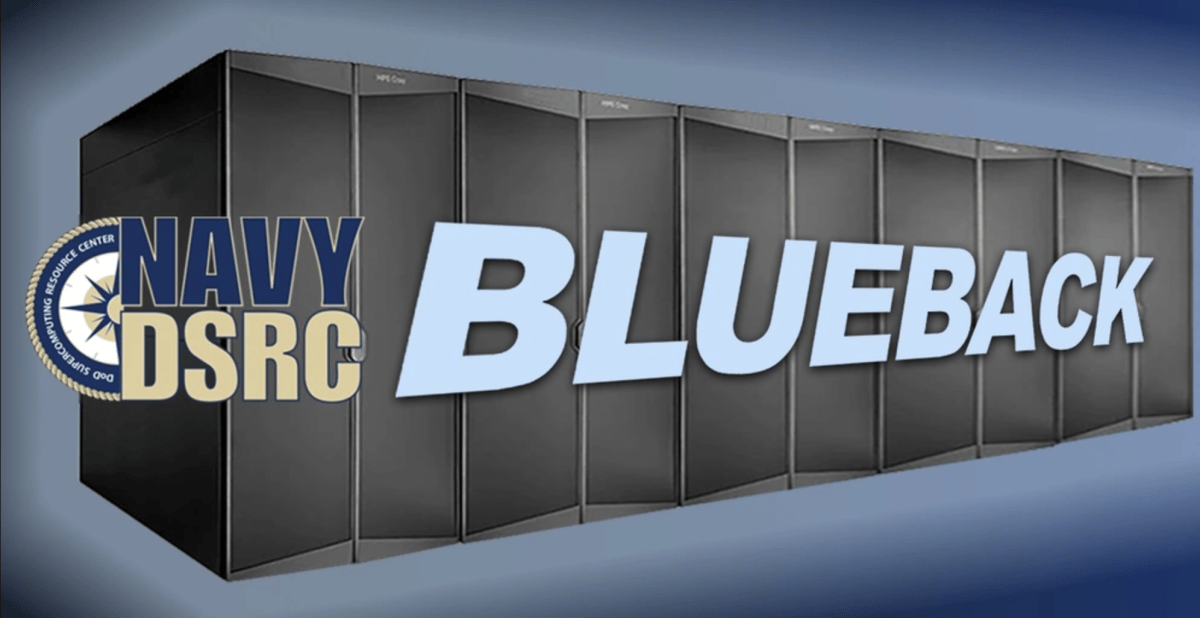Navy’s new $25M supercomputer equipped with cutting edge AI and machine learning ‘accelerators’

The Navy’s newest supercomputer — named Blueback, after the now-decommissioned Barbel-class attack submarine — is estimated to be ready for production use by personnel from across all Defense Department components in mid-2024, DefenseScoop has learned.
In separate conversations via email over the last two weeks, Navy DOD Supercomputing Resource Center (DSRC) Chief Technologist Bryan Comstock and another senior defense official (who would only comment on the condition of anonymity) shared new details about the powerful new machine poised to enter the U.S. military’s arsenal.
High-performance supercomputers are measured in flops, or floating-point operations per second, which each refer to a possible calculation the systems can complete. One petaFLOPS is essentially equal to one quadrillion of those calculations per second. And Blueback will have a processing capacity of 17.7 petaFLOPS.
That HPE Cray EX4000 system is equipped with capabilities from AI chipmakers Nvidia and AMD, including the latest-generation accelerator technology from the latter with 128 AMD MI300A Accelerator Processing Units (APUs).
“The Artificial Intelligence / Machine Learning (AI/ML) nodes in Blueback will be based on the AMD MI300A accelerator, which is also underpinning at least one U.S. exascale system. Blueback will have the [DOD High Performance Computing Modernization Program or HPCMP’s] first AMD MI300A nodes,” Comstock noted.
Broadly, exascale systems have the capacity to perform one quintillion — or a billion billion — calculations per second. The Energy Department’s Frontier supercomputer is the U.S. government’s first exascale machine, and others are in the works.
While Blueback itself is not exascale, Comstock said to his team’s knowledge, it is the first Navy supercomputer utilizing an accelerator that is also utilized by Energy’s exascale systems.
Blueback cost approximately $25 million to purchase, DefenseScoop also confirmed.
“The purchase price also includes a test and development system (TDS), used for testing upgrades before putting them on the production system. The cost does not include the annual administration and maintenance contract provided by HPE, which is based on a percentage of the system cost,” Comstock said.
Installed at the Navy DSRC facility operated by the Commander, Naval Meteorology and Oceanography Command (CNMOC) at Stennis Space Center in Mississippi, Blueback will join the Navy’s existing systems named Narwhal — which is currently the largest unclassified supercomputer in the DOD — and Nautilus. Notably, Blueback will also replace three older HPE SGI 8600 supercomputers in the defense HPCMP ecosystem — while also enabling its aggregate supercomputing capability to remain above 100 petaFLOPS.
“Those systems arrived in 2018 and are scheduled for decommission in the near future,” Comstock said.
The senior defense official DefenseScoop spoke to said Blueback will replace Gaffney, Koehr and a smaller test and development system.
“Blueback will support the same applications that currently use Narwhal and Nautilus. These applications include U.S. Navy weather modeling tools as well as several computational fluid dynamics, computational structural mechanics, and various acquisition and research and development activities,” the official also said.
The Navy DSRC is one of five Defense Department supercomputing resource centers. It currently categorizes high-performance computing workloads into computational focus areas. Specific to the Navy DSRC, the largest group of applications, according to Comstock, come from the climate, weather, ocean and computational fluid dynamics disciplines.
“In general, the use cases between the three systems (Blueback, Nautilus, Narwhal — in order of newest to oldest) will be similar. However, with each new generation of HPC technology, DoD users are able to push their research and development further. For instance, models and simulations may be updated to support higher resolutions and show finer grained results,” he wrote to DefenseScoop.
Comstock also noted that Blueback demonstrates the “leaps made in technology over the last decade-plus” and will deeply support DOD and military staff.
“A single Blueback AI/ML node containing four of the AMD MI300A accelerators will have two times the total dual precision processing power that an entire Navy DSRC supercomputer known as Einstein had and will use approximately .25% of the power that the entire Einstein system utilized. Einstein was in production from 2008 to 2012,” Comstock said.





